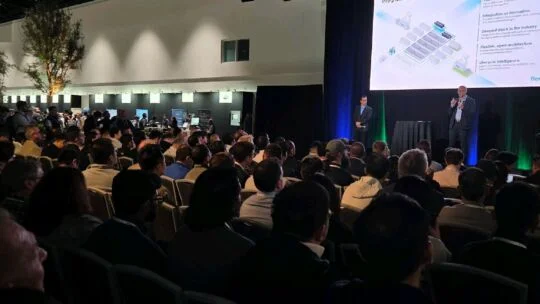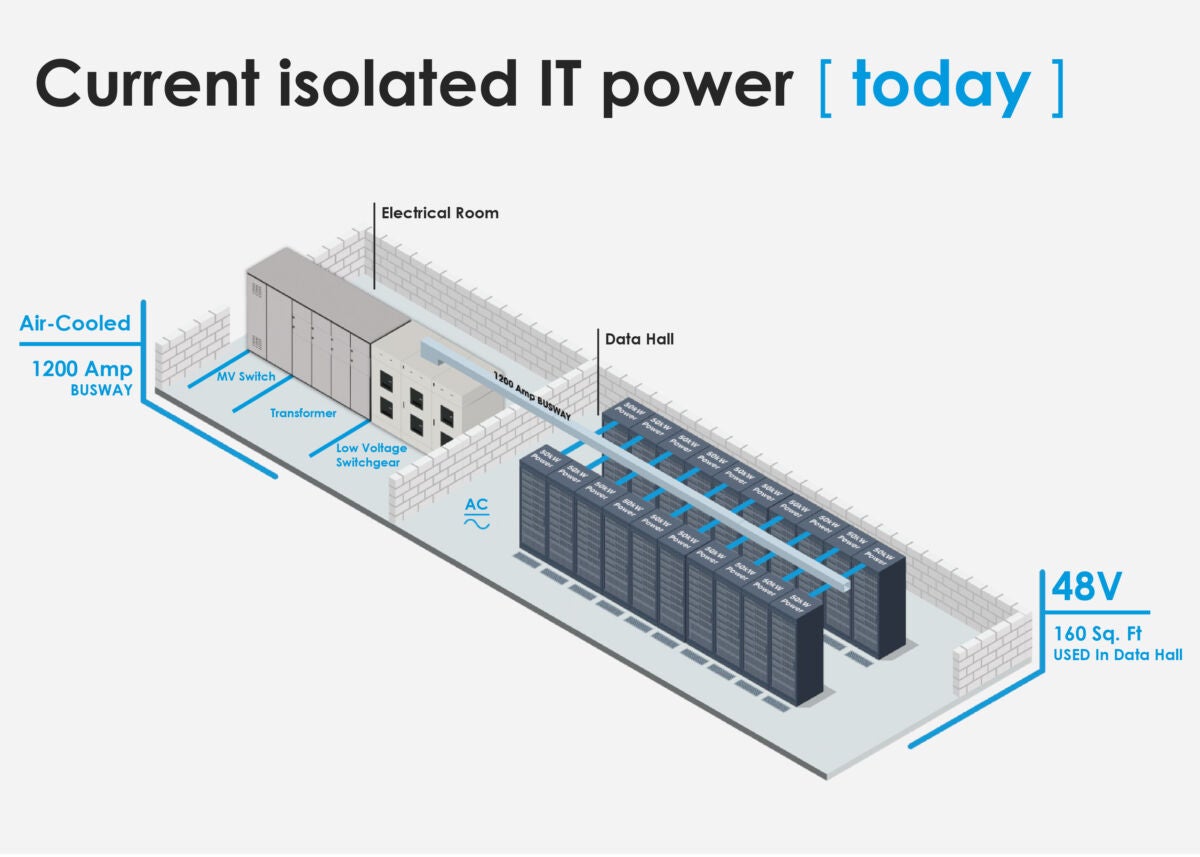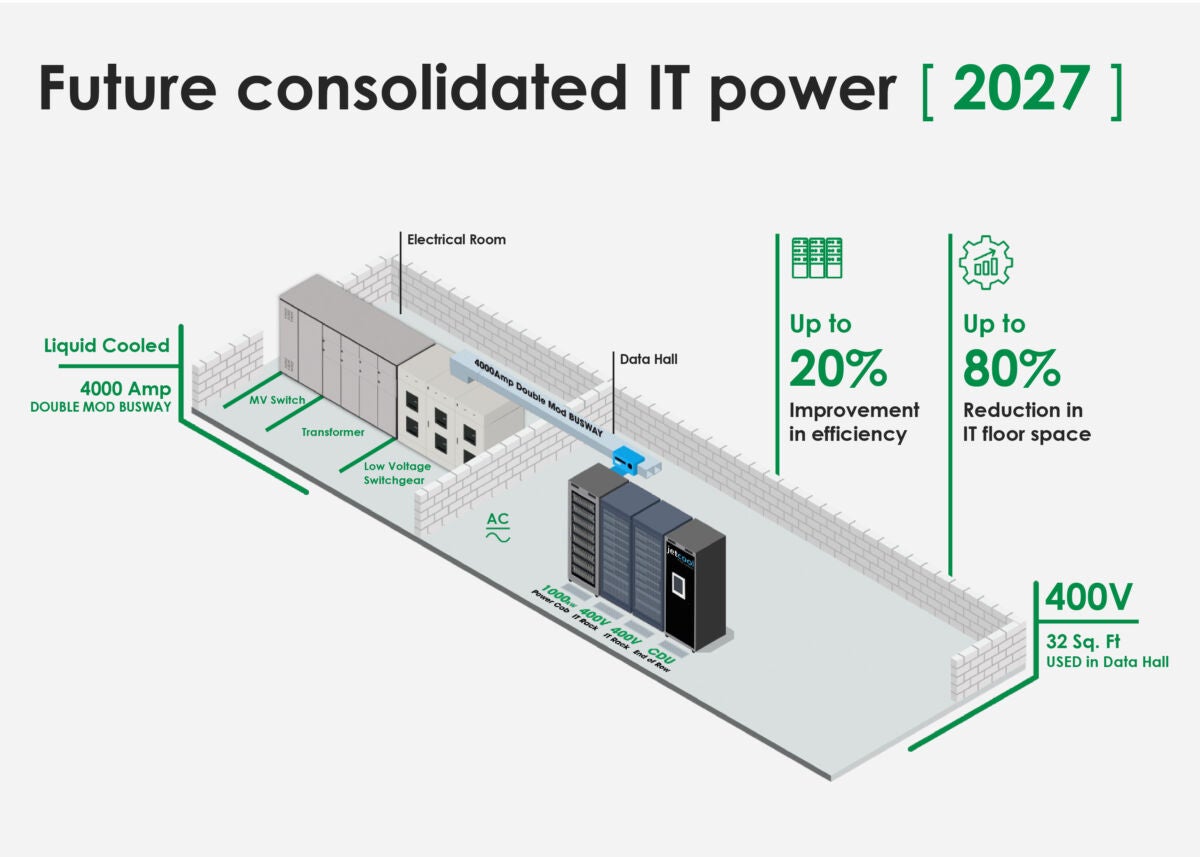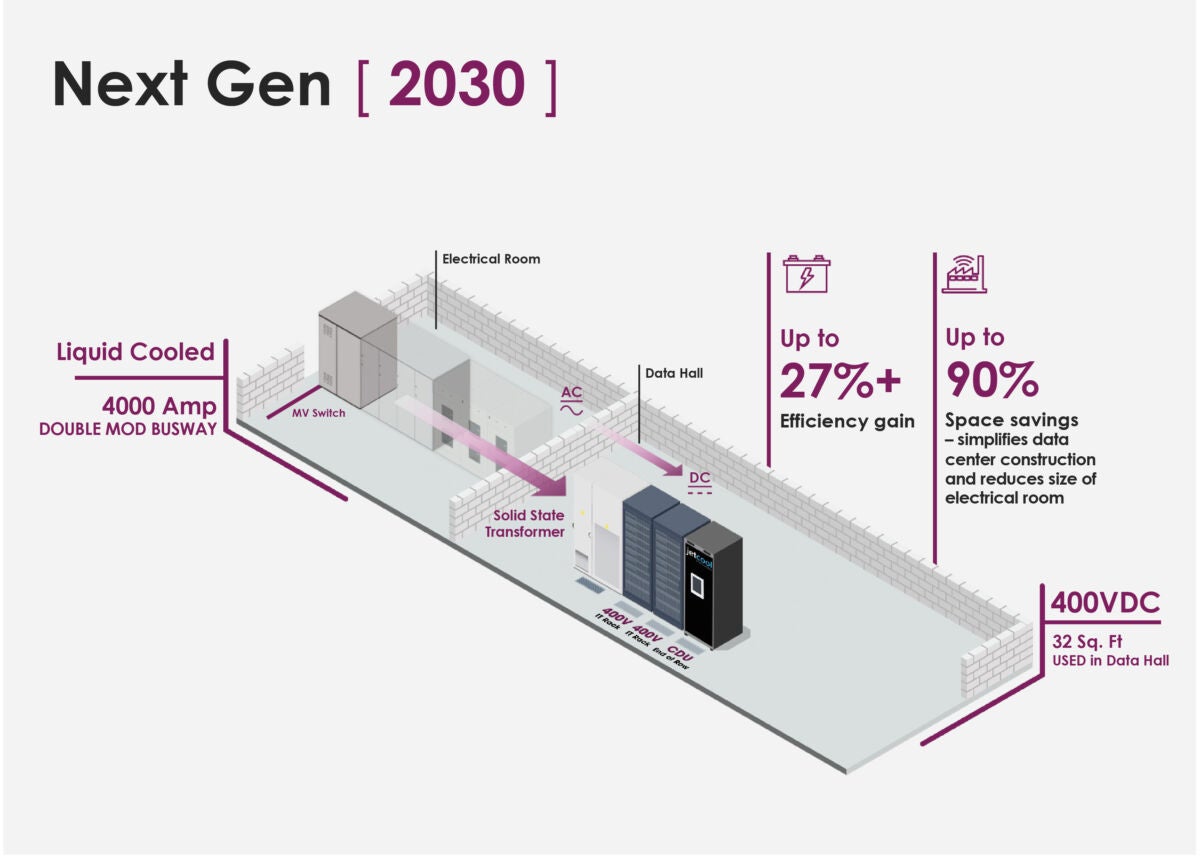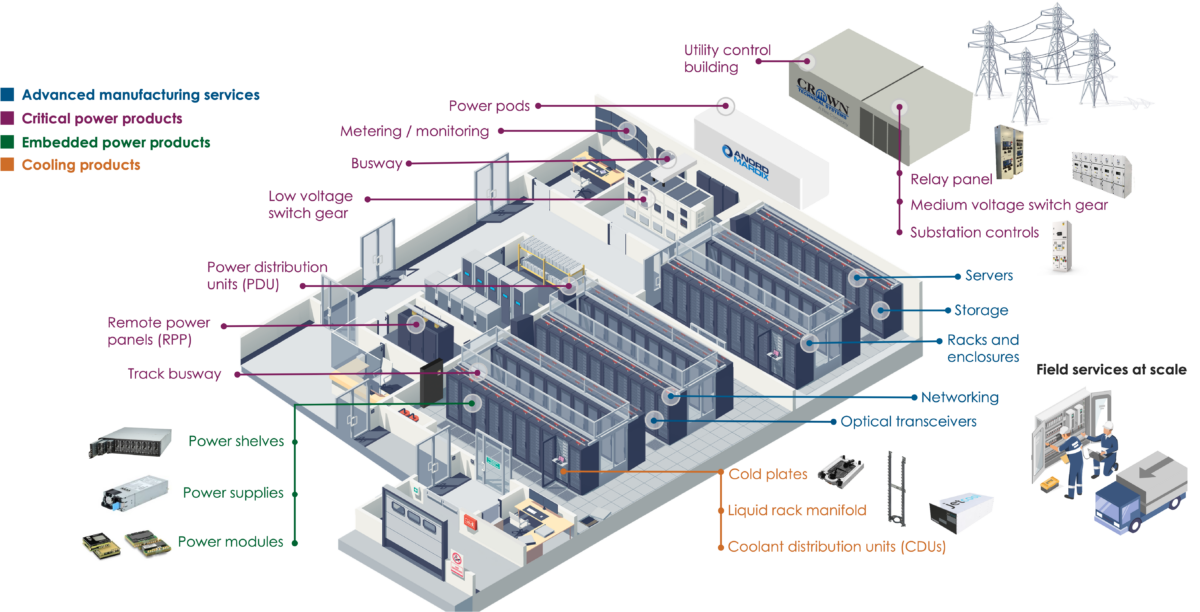
La insaciable demanda de IA y computación de alto rendimiento (HPC) impulsa la necesidad de mayor capacidad en los centros de datos. La construcción de nuevos centros de datos continúa, pero existen desafíos. El terreno es un factor clave, especialmente considerando los parámetros que rigen la ubicación preferida de los centros de datos: acceso a energía confiable, suficiente infraestructura de banda ancha, agua para refrigeración, proximidad a los usuarios finales y la zonificación y los permisos aplicables. En conjunto, estos factores impulsan la innovación a medida que los operadores de centros de datos replantean la configuración de los grandes espacios interiores. El dicho inmobiliario "ubicación, ubicación, ubicación" se refiere tanto a lo que hay dentro del edificio como a su ubicación.
Más allá de la capacidad de cómputo: la energía y la refrigeración como factores determinantes
Ya sea construyendo nuevos centros de datos o modernizando los existentes, el objetivo es obtener más procesamiento en menos espacio (mayor densidad). Pero ¿es esto factible dada la enorme cantidad de energía que se requiere para alimentar los centros de datos modernos?
Tradicionalmente, la relación entre el espacio gris y el espacio blanco en el centro de datos ha sido de aproximadamente 1:1, según Revista de construcción RICSEsto significa que por cada metro cuadrado dedicado a equipos eléctricos y de refrigeración (el espacio gris ocupado por equipos de conmutación, transformadores de sistemas de alimentación ininterrumpida (SAI), unidades de aire acondicionado para salas de ordenadores (CRAC), enfriadores, etc.), hay un metro cuadrado de espacio libre reservado para equipos de TI como servidores, dispositivos de almacenamiento y de red. Los centros de datos de hiperescala suelen tener una proporción cercana a 1:3, con más superficie destinada a... calcularLa proporción precisa está influenciada por una serie de factores operativos, entre ellos:
- Densidad de potencia El consumo de energía comienza en el chip. Las unidades centrales de procesamiento (CPU) gestionan una amplia variedad de tareas informáticas y operan a entre 150 y 300 W. Los aceleradores, como las unidades de procesamiento gráfico (GPU), diseñados para el paralelismo masivo ampliamente utilizado en IA, requieren una potencia diez veces superior a la de las CPU, operando a hasta 1500 W y en aumento. Los centros de datos que consumen más energía por metro cuadrado suelen necesitar más espacio para la infraestructura eléctrica y de refrigeración.
- Tecnología de refrigeración — A medida que aumenta la densidad de procesamiento, los centros de datos se calientan. Hace apenas unos años, los racks de servidores típicos se diseñaban para manejar 10 kW de energía. Ahora, la mayoría puede manejar entre 40 kW y 60 kW, y los hiperescaladores... preparándose para 1+ MW. Con ese nivel de rendimiento, se generará 20 veces más calor que antes. La infraestructura de refrigeración puede elevar la relación de espacio gris a blanco por encima de 1:1, ya que se requieren más conductos y sistemas CRAC para la refrigeración por aire (útiles hasta unos 50 kW) o más tuberías, bombas y sistemas de contención para la refrigeración líquida.




